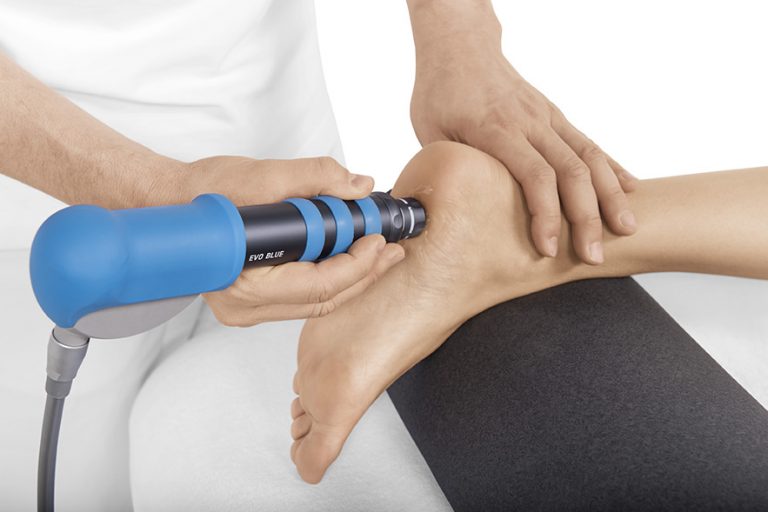Radial Shockwave Treatment: An Innovative Solution for Chronic Pain from kilogi's blog
Chronic pain is a debilitating condition that affects millions of people worldwide, often limiting their daily activities and reducing their quality of life. Fortunately, advancements in medical technology have introduced new treatments that offer effective relief. One such breakthrough is Radial Shockwave Therapy. This innovative solution is gaining recognition for its ability to treat chronic pain non-invasively and effectively. In this article, we will explore the benefits, mechanisms, and applications of radial shockwave therapy, providing valuable insights into why it might be the ideal treatment for chronic pain sufferers.

Understanding Radial Shockwave Therapy
Radial Shockwave Therapy (RSWT) involves the use of high-energy sound waves to stimulate healing and reduce pain in affected areas. Unlike traditional shockwave therapy, which uses focused waves, radial shockwaves spread outwards from the source, making them particularly effective for treating larger areas and superficial tissues.
How Does Radial Shockwave Therapy Work?
The procedure involves a handheld device that generates acoustic waves. These waves penetrate the skin and interact with the underlying tissues, promoting several beneficial effects:
1. Increased Blood Flow
The shockwaves stimulate blood circulation in the treated area, enhancing the delivery of oxygen and nutrients necessary for tissue repair and regeneration.
2. Collagen Production
Collagen is a vital protein for maintaining the integrity and elasticity of tissues. Radial shockwave therapy promotes collagen synthesis, helping to repair damaged tissues and improve their function.
3. Reduction of Calcifications
Calcifications, or abnormal calcium deposits, can cause significant pain and restrict movement. Radial shockwaves help break down these deposits, allowing the body to reabsorb and eliminate them naturally.
4. Pain Relief
By desensitizing nerve endings and promoting the release of endorphins, the body's natural painkillers, radial shockwave therapy provides immediate and lasting pain relief.
Benefits of Radial Shockwave Therapy
Radial shockwave therapy offers numerous benefits for those suffering from chronic pain:
1. Non-Invasive Treatment
One of the primary advantages of radial shockwave therapy is that it is non-invasive. There are no incisions, anesthesia, or prolonged recovery periods, making it a safer alternative to surgery.
2. Quick and Effective
Treatment sessions are typically short, lasting between 15 to 30 minutes. Patients often experience significant pain relief and improved function after just a few sessions.
3. Minimal Side Effects
Radial shockwave therapy is generally well-tolerated, with minimal side effects such as mild discomfort or redness at the treatment site, which usually resolve quickly.
4. Versatile Applications
This therapy can treat a wide range of conditions, from plantar fasciitis and tennis elbow to shoulder tendinitis and Achilles tendinopathy.
Conditions Treated with Radial Shockwave Therapy
Radial Shockwave Therapy is effective for treating various chronic pain conditions, including:
Plantar Fasciitis: This common cause of heel pain responds well to radial shockwave therapy, which helps reduce inflammation and promote healing of the plantar fascia.
Tennis Elbow: By targeting the tendons in the elbow, radial shockwave therapy alleviates pain and enhances mobility for those suffering from this repetitive strain injury.
Shoulder Tendinitis: This therapy is effective in reducing pain and improving function in patients with shoulder tendinitis or rotator cuff injuries.
Achilles Tendinopathy: Radial shockwaves stimulate healing and reduce pain in the Achilles tendon, a common injury among athletes.
Hip Pain: Conditions like trochanteric bursitis can be effectively managed with radial shockwave therapy, providing relief from hip pain and improving mobility.
What to Expect During a Radial Shockwave Therapy Session
Knowing what to expect during a radial shockwave therapy session can help ease any apprehensions:
1. Initial Consultation
Your therapist will begin with a thorough assessment of your condition, including your medical history and a physical examination, to determine if radial shockwave therapy is suitable for you.
2. Treatment Procedure
During the session, the therapist will apply a gel to the treatment area to facilitate the transmission of shockwaves. The handheld device will then deliver the acoustic waves to the affected tissues. The procedure is typically well-tolerated, with patients experiencing only mild discomfort.
3. Post-Treatment Care
After the session, you might experience temporary soreness or redness in the treated area. It is important to follow any aftercare instructions provided by your therapist to ensure optimal recovery.
Maximizing the Benefits of Radial Shockwave Therapy
To get the most out of your Radial Shockwave Therapy treatments, consider the following tips:
Consistency is Key: Attend all scheduled sessions as advised by your therapist for the best results.
Stay Active: Engage in gentle exercises and stretches recommended by your therapist to support the healing process.
Hydration: Drinking plenty of water helps to flush out metabolic waste products released during the therapy.
Healthy Lifestyle: Maintain a balanced diet and healthy lifestyle to support overall recovery and prevent future injuries.
Radial Shockwave Therapy is an innovative and effective solution for managing chronic pain. Its non-invasive nature, coupled with its ability to promote healing and provide pain relief, makes it a valuable treatment option for many conditions. If you’re struggling with chronic pain and seeking a safe and efficient alternative to traditional treatments, radial shockwave therapy could be the answer. Consult with a qualified healthcare provider to explore how this revolutionary therapy can transform your recovery journey and enhance your quality of life.

The Wall